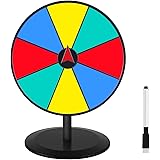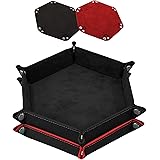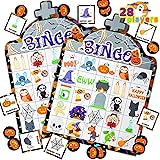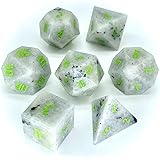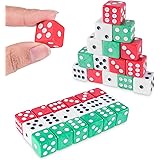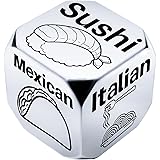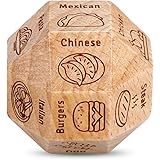The exhilarating clatter of dice, the shouts of players, and the palpable energy emanating from the craps table can often be an intimidating spectacle for newcomers. Imagine standing on the edge, drawn by the excitement but held back by uncertainty. This is a common experience for many who wish to learn this dynamic casino game. Just as witnessed in the accompanying video, the journey into how to play craps begins with understanding its fundamental mechanics and etiquette. This guide aims to expand upon the video’s essential teachings, providing a deeper dive into the world of craps for beginners, ensuring that the first roll is approached with confidence.
Mastering craps is not merely about memorizing rules; it is also about comprehending the flow of the game and the strategic implications of various bets. The interactive lesson provided in the video, featuring a seasoned player guiding a novice, perfectly illustrates this learning process. Therefore, the following sections will elaborate on these foundational concepts, offering a comprehensive understanding that complements your visual learning experience.
Unlocking the Basics of Craps: A Beginner’s Guide
Craps can appear complex at first glance, but its core principles are remarkably straightforward. The game revolves around the outcome of dice rolls, where players bet on various combinations. Understanding the game’s rhythm and essential terminology is crucial for any aspiring craps player. From identifying the ‘On-Off’ puck to initiating your first bet, a structured approach is invaluable.
Navigating the Craps Table: Etiquette and Entry
Approaching a live craps table can feel like stepping onto a bustling marketplace, full of unique customs and rapid action. However, a few simple rules of craps etiquette ensure a smooth entry into the game. First and foremost, observe the ‘On-Off’ puck. This circular marker is a vital indicator of the game’s current status. If the puck is positioned on any of the numbered boxes (4, 5, 6, 8, 9, 10), it signifies that a game is actively in session, meaning a ‘point’ has been established and the shooter is attempting to roll that number again.
When the puck is ‘Off’ and typically placed in the ‘Don’t Come’ area, it indicates that a new game, or ‘come out roll,’ is about to commence. This is the optimal time to buy into the game. To exchange cash for chips, money should always be placed on the table, never directly handed to a dealer. This procedural step allows the pit boss or boxman to clearly see the transaction, ensuring transparency and security. Subsequently, the dealer will convert your cash into chips, which are then placed in your chip rack.
The Heart of the Game: Pass Line Bets
The Pass Line bet is universally recognized as the most fundamental wager in craps, serving as the entry point for most players. To participate as the ‘shooter’—the player rolling the dice—a Pass Line bet (or a Don’t Pass bet) is typically required. This bet is made before the ‘come out roll,’ the very first roll of a new game. Multiple players can place Pass Line bets simultaneously, each rooting for the same outcome.
Understanding the Come Out Roll and Point Rolls
The game of craps unfolds in two distinct phases: the come out roll and subsequent point rolls. During the initial come out roll, specific outcomes determine whether a Pass Line bet wins, loses, or establishes a ‘point’ number. A roll of 7 or 11 on the come out roll results in an instant win for Pass Line bettors, paid at 1:1 odds. Conversely, a roll of 2, 3, or 12, known as ‘craps’ numbers, means an immediate loss for Pass Line bets. These instances conclude the come out roll, and a new one is initiated.
However, if the come out roll results in a 4, 5, 6, 8, 9, or 10, that number becomes the ‘point.’ The dealer then moves the ‘On-Off’ puck to mark this number. The game then shifts into the ‘point roll’ phase. The objective for the shooter is now to roll the established point number again before a 7 is rolled. If the point number is hit, Pass Line bets win. If a 7 is rolled before the point, it is called a ‘seven out,’ and Pass Line bets lose. Any other number rolled during the point phase does not affect Pass Line bets; it merely prolongs the game.
The ‘Do We Don’t’ Question: Pass vs. Don’t Pass
A common query among beginners is whether one can bet on both the Pass Line and Don’t Pass Line simultaneously, a concept sometimes referred to as ‘hedging’ or ‘do we don’t.’ While technically possible, it is generally considered an inefficient strategy for craps. Although it might seem to guarantee a win, a specific rule makes it unprofitable: if a 12 is rolled on the come out, Pass Line bets lose, but Don’t Pass bets push (neither win nor lose). Therefore, in such a scenario, a net loss is incurred. Most players choose one side or the other to maximize potential returns.
Optimizing Your Bets: The Power of Odds Bets
Once a point has been established, an additional and highly advantageous wager becomes available: the Odds bet. This bet is placed directly behind your Pass Line bet and is considered the best bet in the casino because it carries a 0% house edge. This means the casino takes no commission on this wager, and payouts are made at ‘true odds,’ reflecting the actual mathematical probability of rolling the number.
True Odds Explained for Craps Payouts
Understanding true odds is key to appreciating the value of an Odds bet. The true odds are determined by the number of ways to roll a specific total with two dice compared to the number of ways to roll a 7 (the losing outcome in a point roll). For example:
- For points 6 and 8: There are five ways to roll a 6 (1+5, 2+4, 3+3, 4+2, 5+1) and five ways to roll an 8 (2+6, 3+5, 4+4, 5+3, 6+2). There are six ways to roll a 7. Thus, the true odds payout is 6:5. This means for every $5 bet, a $6 profit is yielded.
- For points 5 and 9: There are four ways to roll a 5 (1+4, 2+3, 3+2, 4+1) and four ways to roll a 9 (3+6, 4+5, 5+4, 6+3). The true odds payout is 6:4, which simplifies to 3:2. Consequently, a $10 bet on the odds for a 5 or 9 would return a $15 profit.
- For points 4 and 10: There are three ways to roll a 4 (1+3, 2+2, 3+1) and three ways to roll a 10 (4+6, 5+5, 6+4). The true odds payout is 6:3, which simplifies to 2:1. Therefore, a $10 bet would yield a $20 profit.
Casinos typically allow players to bet ‘maximum odds,’ which can vary from double odds (two times your Pass Line bet) to 10x or even 100x odds at certain tables. While placing maximum odds does not increase your chance of winning, it significantly boosts your payout when a win occurs, aligning with the mathematically fair odds.
Bets to Approach with Caution: Proposition and Field Bets
While the Pass Line and Odds bets form the backbone of sound craps strategy, many other bets are offered on the table. However, it is generally advised for beginners to avoid certain bets due to their high house edge, which essentially means a larger percentage of these bets is retained by the casino. These are often called ‘poor bets’ because they offer significantly lower payouts relative to their true probability.
Proposition Bets: High Risk, Low Value
The center of the craps table is adorned with various ‘proposition bets.’ These are typically one-roll wagers with enticingly high payouts but abysmal odds. For instance, a bet on ‘Any Craps’ (2, 3, or 12) pays 7:1, but the true odds are closer to 8:1. Betting on a specific number like a 2 or 12 can offer payouts as high as 30:1, but the likelihood of these outcomes is extremely low. As a comparison, a $1 bet on the 2 or 12 may return $29, but it is considered a long shot. While these bets can be fun for a speculative flutter, they are not recommended for those looking to play strategically or preserve their bankroll.
The ‘Hard Ways’ bets (e.g., Hard 4, Hard 6, Hard 8, Hard 10), where the number is rolled with identical dice (e.g., two 2s for a Hard 4), are another category of proposition bets. These bets remain active for multiple rolls, but they lose if a 7 is rolled or if the number is made an ‘easy way’ (e.g., 1+3 for an Easy 4). Although they have slightly better odds than other proposition bets, they still carry a higher house edge than Pass Line or Odds bets.
The Big 6 and 8: A Suboptimal Choice
The ‘Big 6’ and ‘Big 8’ bets are often prominently displayed on craps tables but are almost universally considered poor choices. These bets pay even money (1:1) if a 6 or 8 is rolled before a 7. However, the exact same wager can be made as a ‘Place Bet’ on the 6 or 8, which pays 7:6. This means for every $6 bet, a $7 profit is made, representing a much better return. Consequently, if a player desires to bet on the 6 or 8, a Place Bet should always be chosen over the Big 6 or Big 8 to maximize the potential payout.
Field Bet: A Roll of the Dice
The Field bet is a one-roll wager that pays if a 2, 3, 4, 9, 10, 11, or 12 is rolled. It typically pays 1:1 on most numbers, with 2 and 12 often paying double, and occasionally triple at some casinos. While it appears to cover many numbers, it notably excludes the 5, 6, 7, and 8, which are statistically the most frequently rolled totals. Even with double or triple payouts on 2 or 12, the house edge on the Field bet typically ranges from 2.78% (with 2x/3x payouts) to over 5%. Therefore, it is considered a moderately poor bet compared to the Pass Line with odds.
The Crew Behind the Craps Table: Understanding Casino Roles
A well-run craps table is a symphony of coordinated effort by several casino personnel, each with a specific role. Typically, a craps table is staffed by three dealers and a boxman, although some casinos may reduce this to three staff members total. The primary roles include:
- Dealers: Two dealers stand along the length of the table, managing bets, paying out winnings, and handling chip transactions for the players in their respective sections. They are the frontline support for players’ wagers.
- Stickman: Positioned in the middle of the table, the stickman is responsible for retrieving the dice after each roll using a long stick. This individual also manages the proposition bets in the center of the table and calls out the results of the rolls.
- Boxman: The boxman sits in the center of the table, opposite the stickman. This supervisor oversees the game, ensures fair play, monitors chip transactions, and resolves any disputes that may arise. The boxman is also responsible for protecting the casino’s money on the table.
Understanding these roles helps demystify the game’s operation, allowing players to feel more comfortable interacting with the crew and placing their bets effectively. Certain bets, like the Pass Line or Field bet, are ‘self-service’ and can be placed directly by the player. However, many other bets, such as Place bets or most proposition bets, must be placed by a dealer or the stickman at your request.
Craps Pointers for a Seamless Experience
Beyond bets and rules, some practical tips can enhance your craps gameplay:
- Money Handling: Always place your money on the table in an open area to be exchanged for chips. Never directly hand money to a dealer, as this can be misconstrued as an improper transaction.
- Contract Bets: Remember that Pass Line and Don’t Pass Line bets are ‘contract bets.’ Once placed, they cannot be removed until the roll sequence is resolved (either the point is hit or a 7 is rolled). Most other bets, however, can be removed or altered at any time before the dice are thrown.
- Dice Protocol: When it is your turn to shoot, five dice are typically offered. You are to select two and return the others. Ensure the dice hit the back wall of the table on your roll. This ensures the roll is legitimate and random.
- Collecting Dice: For those interested in collecting casino souvenirs, used craps dice can often be acquired. Casinos will intentionally ‘damage’ them, usually by punching a hole through them, to prevent their re-use in games. This makes them imperfect for play but perfect for collectors.
By internalizing these basic strategies and protocols, beginners are well-equipped to confidently engage with craps. The game’s vibrant atmosphere, combined with informed betting, transforms a potentially intimidating experience into an exciting and rewarding one. Learning how to play craps effectively is a journey, and with each roll, your understanding and enjoyment of this classic casino game are likely to grow.


